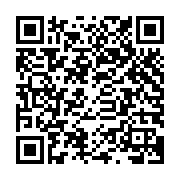MASK - WOODEN FACE WEARING UDENG
Rectangle semi-circular painted, hand carved wooden mask. The top end is open, bottom end closed. On the front a stylised face is carved with two red eyes, a raised pyramid shaped gold coloured nose and a raised square mouth with a red boarder and three vertical teeth. At the top is a carved stylised udeng head ware, gold raised decorated band across the brow with a gold and green decoration rising us from the middle. The face of the mask is coloured a reddish brown with gold, black, green painted decorations (mixture of straight and squiggly lines and flowers). On the reverse side of the mask, in the middle near the top is a metal eye screw.
The wooden mask was purchased by Astit Olszowy and her husband Richard during a trip to Bali and Lombok in 1993. Astit was born in Indonesia and moved to Australia when she married Richard. Astit quickly became an active member of the Indonesian community in Perth. Part of her role was to promote and celebrate Indonesian culture in Perth. Astit also liked to collect reminders of Indonesian culture when she went back to Indonesia and display them in her family home.
This carved wooded mask was purchased in either Bali or Lombok and features a stylised male face and is wearing the traditional Balinese headdress called an udeng. The udeng is worn by Balinese men and is made from a length of fabric (usually Cotton) and is styled to be worn in a very specific style. The asymmetrical shape of the udeng with the right side higher than the left side is to remind the wearer to always do the right thing and to live in justice. It is normally worn at religious ceremonies, formal meetings, official events and other important community events.
Details
Details
This object is part of a collction that tells the story of individuals and families that either voluntarily or were forced to leave their home and migrate to Western Australia from 1829 to modern day. These stories relate to leaving family and a known lifestyle and culture behind, embarking on a journey that for some was long, and creating a new home in an unfamiliar land with an unfamiliar culture.
City of Armadale - History House
City of Armadale - History House
More items like this
Other items from City of Armadale - History House
- MASK - WOODEN CARVED WITH LIZARD DECORATION
- GONG - WOOD FRAME
- HAMMER - WOOD
- PUPPET - SUNDANESE WAYANG GOLEK OF GHATOTKACA
- PUPPET - WAYANG GOLEK DEWI PERGIWA
- COFFEE POT - EARTHENWARE
- FLAG - TIGRAY STATE
- PLAQUE - CENTENARY SCULPTURE ARMADALE & DISTRICTS CHAMBER OF COMMERCE
- MAGNET - TIPPY'S PIZZA KELMSCOTT
- BIBLE - PRAYERS AND PSALMS IN DUTCH
- PEN & INK DRAWING - MALE SITTING MASKED STEPHEN O'BRIEN
- PEN & INK DRAWING - FEMALE RECLINED MASKED STEPHEN O'BRIEN

